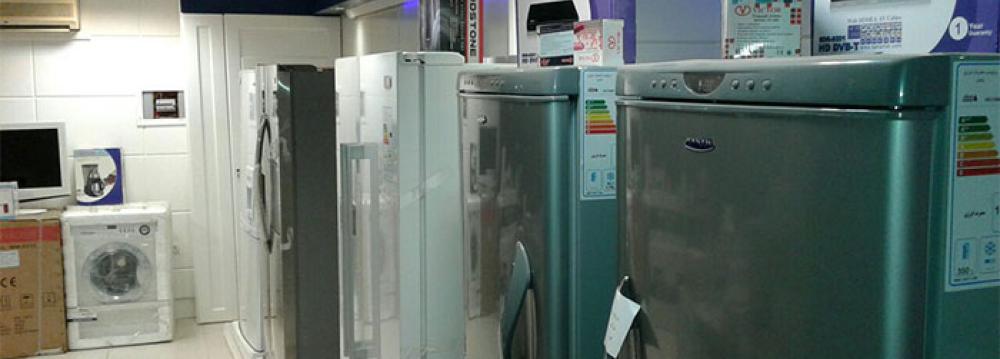Low demand is taking its toll on Iran’s home appliances sector, especially its fridges and air conditioning systems.
Back in the 80s, 170 fridge manufacturers were operating in Iran, which number has declined to 40 that are working at 30-40% capacity, the Persian economic daily Forsat-e Emrooz reported.
The paper has approached business owners and union members to discuss the domestic fridge manufacturing industry which, like many other sectors, have been in the grip of a slump.
“The company is currently working at 20% capacity,” says Mostafa Khamisi, CEO of the medium-sized LTC, a domestic fridge producer.
His 2,000-square meter factory was founded in 1997, with an investment of 200 billion rials ($5.8 million at current market exchange rate).
Khamisi noted that it had to lay off 100 of its 140 employees in recent years.
High inflation rate has led to a hike in production costs, along with significant currency devaluation, and caused foreign products with lower prices to be favored over their domestic counterparts.
Rampant smuggling and the drastic reduction in people’s purchasing power have added to the industry’s woes.
The sanctions imposed on Iran’s economy over Tehran’s nuclear energy program also left a huge impact on many Iranian industries both on the supply and demand sides.
In recent years, manufacturers of many sectors have faced restrictions on upgrading their machinery and acquiring new technologies to increase the quality of their products.
They have, thus, lagged behind in competition with major international brands such as South Korean companies of Samsung and LG Electronics that have long had a strong foothold in the Iranian market.
Iranian brands currently have only a 35% share of the domestic home appliance market.
About 100 companies in the home appliance sector have gone out of business amid low demand for domestic products, according to the head of Home Appliances Manufacturers Union.
“Also, more than 500 major firms active in the production of electronic home appliances are operating at 20-60% of their capacity,” Mohammad Reza Dayani was also quoted as saying by Bourse Press.
Dayani noted that only two South Korean companies hold a 55% share–an apparent reference to Samsung and LG Electronics.
“Home appliances account for 13% of all the goods smuggled into the country,” he added.
According to Ali Jamali, the head of Refrigeration and Air-Conditioning Industries Union, technologies for the manufacture of fridges and other refrigeration devices are outdated.
“Machinery used in the sector are worn out and have been operating beyond their lifespan,” he added.
Sanctions were lifted on January 16, following a July nuclear deal between Iran and world powers. However, the removal has failed to stimulate industries both on the supply and demand side.
Consumers refrain from buying as they still hold on to expectations that prices are going to fall.
Mohammad Tarhanpour, the head of Home Appliances Union, has warned that many producers are on the verge of going bankrupt since there is virtually no customer for their products.
In October last year, the government proposed a loan scheme for the purchase of domestic products to help manufacturers unload their bulging inventories, promote consumer spending and stimulate growth.
A few banks later started to grant loans, but the plan failed to encourage consumers to buy low-quality domestic products.
“The loan scheme is a botched plan,” says Khamisi. “It has not had any positive effect on the market and it will not.”
The new post-sanctions climate, however, has sparked hope for the firms to find a way out of the crisis.
Mohammad Hassan Qahri, a member of Home Appliances Manufacturers Union, said in early May that Iranians will soon team up with prominent international brands to form joint ventures for the production of home appliances.
The move, he added, is aimed at lowering the cost of well-known products that are currently imported, generating jobs and transferring the latest technologies used globally into the domestic sector.
Domestic manufacturers are also looking to export the products made through the joint ventures.
According to Qahri, Persian Gulf countries, Afghanistan, Pakistan, Turkmenistan, Lebanon and Syria are among potential export destinations.


